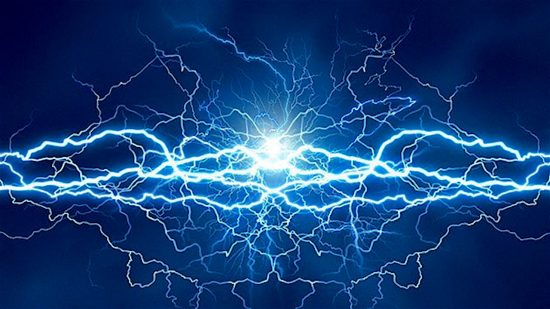
Electric Charge. Stock image.
Oct 29, 2018
Astronomers see magnetism but not electricity.
Scientists working with dynamos (an abbreviation of the nineteenth century term, electric-dynamo) think they found clues to how stars and galaxies acquire their magnetism. Turbulence in plasmas forms small magnetic fields, but scientists struggle to understand how those small fields coalesce into one large field.
Magnetic fields are observed all over the Universe, but astrophysicists do not have a firm theoretical foundation that explains how they are generated, or how the Universe acquires persistent magnetic properties. In fluid dynamics experiments, small effects combine due to “shear forces”, similar to how a tornado works. Winds in a tornado are often observed with multiple tendrils, or funnels, that combine into one large vortex. However, tornadoes subside and dissipate, while stars and galaxies do not.
Regardless of how tornadoes form and vanish, considering magnetic fields without also thinking about the underlying electric fields is like trying to understand floods without considering the rain. In an Electric Universe, magnetic fields in stars and galaxies are easy to understand, since it is electromagnetic fields that exist and not magnetic fields in isolation. It is a common mistake to think of plasma in terms of “ionized gas”, subject to the same gravity-based influences experienced by neutral matter.
As has been written before, plasma is an emergent phenomenon. In other words, it is a manifestation of many conditions that form a single condition. Plasma occurs as a result of phenomena like characteristic velocity: the ion velocity in a plasma tends to be determined by electric fields generated inside. Also, the degree of ionization affects the general conditions of a plasma, making it more or less susceptible to electromagnetic fields. All of those conditions, and more, combine in plasma.
Electricity in space is difficult to detect—its effects can be mistaken for other radiative emissions—but electromagnetic fields can be mapped. Modern astronomers think that the fields are “primordial” fragments left over from the Big Bang. They rely on that conclusion to explain how the structures that make up the Universe were formed.
However, moving charges constitute an electric current that can generate magnetic fields. That current is then “wrapped” in the field. When more charged particles accelerate in the same direction, the field gets stronger. That is a familiar idea to electrical engineers, but when astronomers find moving charges in space they are mystified and refer to them as “winds”, or “shear forces”, or “shock waves.”
For charged particles to move, they must move in a circuit. Energetic events cannot be explained by local conditions, alone, the entire circuit is involved. For that reason, Electric Universe theory emphasizes connectivity with an electrically active network composed of Birkeland current filaments threading through the cosmos.
Stephen Smith












